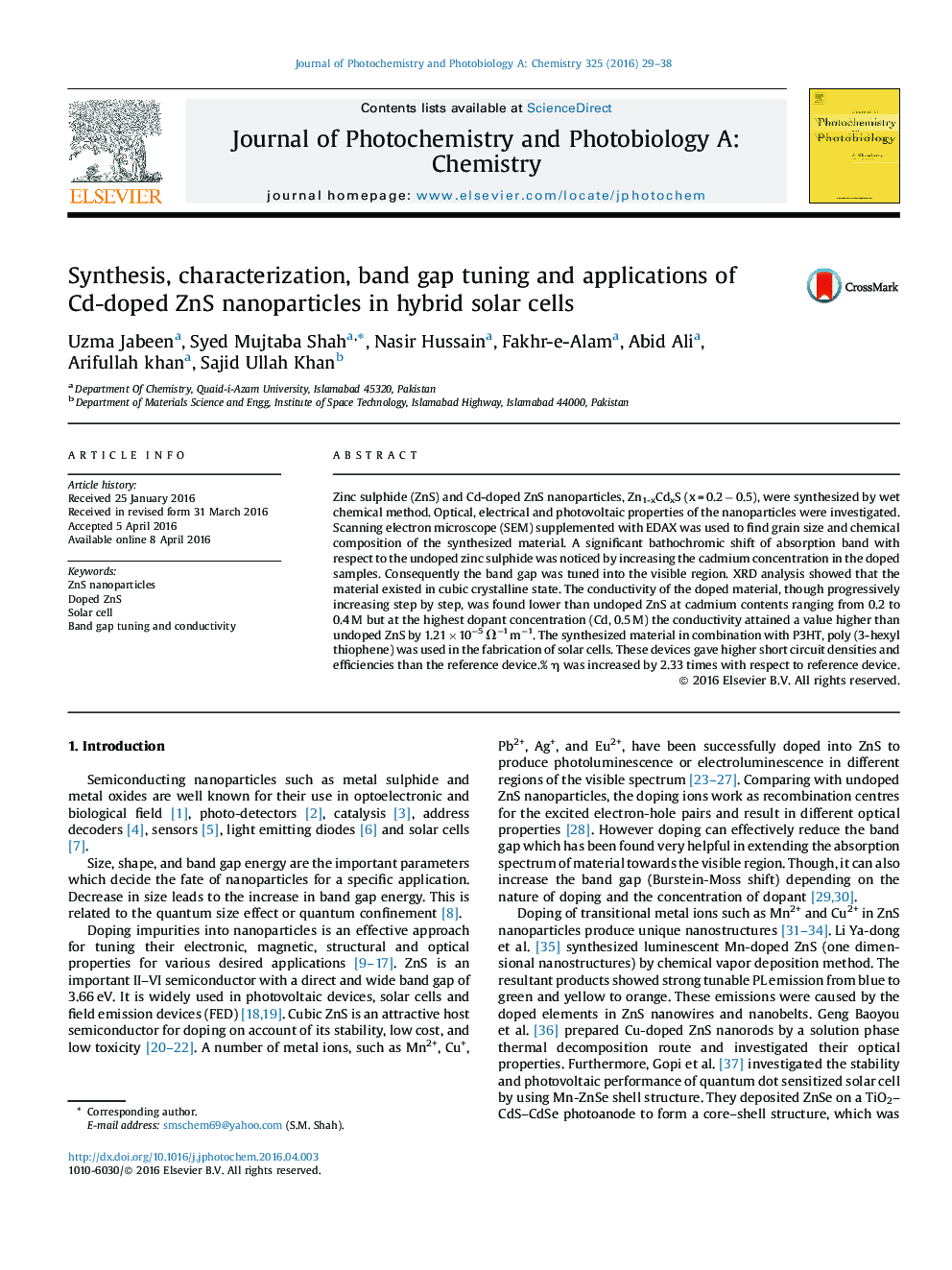| کد مقاله | کد نشریه | سال انتشار | مقاله انگلیسی | نسخه تمام متن |
|---|---|---|---|---|
| 26076 | 43933 | 2016 | 10 صفحه PDF | دانلود رایگان |

• The band gap of ZnS is effectively tuned by cadmium doping from 3.4 to 2.4 eV.
• Conductivity of the Cd-doped ZnS nanoparticles first decreases and then increases to a maximum value of 3.99 × 10−5 Ω−1 m−1 at cadmium content of 0.5 M.
• Cadmium doping does not affect the cubic crystalline structure of ZnS nanoparticles except minor distorsions.
• The overall% η of the solar cell using Cd-doped ZnS (0.5 M) nanoparticles was increased by 2.33 times with respect to the reference device (P3HT-ZnS).
Zinc sulphide (ZnS) and Cd-doped ZnS nanoparticles, Zn1-xCdxS (x = 0.2 − 0.5), were synthesized by wet chemical method. Optical, electrical and photovoltaic properties of the nanoparticles were investigated. Scanning electron microscope (SEM) supplemented with EDAX was used to find grain size and chemical composition of the synthesized material. A significant bathochromic shift of absorption band with respect to the undoped zinc sulphide was noticed by increasing the cadmium concentration in the doped samples. Consequently the band gap was tuned into the visible region. XRD analysis showed that the material existed in cubic crystalline state. The conductivity of the doped material, though progressively increasing step by step, was found lower than undoped ZnS at cadmium contents ranging from 0.2 to 0.4 M but at the highest dopant concentration (Cd, 0.5 M) the conductivity attained a value higher than undoped ZnS by 1.21 × 10−5 Ω−1 m−1. The synthesized material in combination with P3HT, poly (3-hexyl thiophene) was used in the fabrication of solar cells. These devices gave higher short circuit densities and efficiencies than the reference device.% η was increased by 2.33 times with respect to reference device.
Figure optionsDownload as PowerPoint slide
Journal: Journal of Photochemistry and Photobiology A: Chemistry - Volume 325, 1 July 2016, Pages 29–38